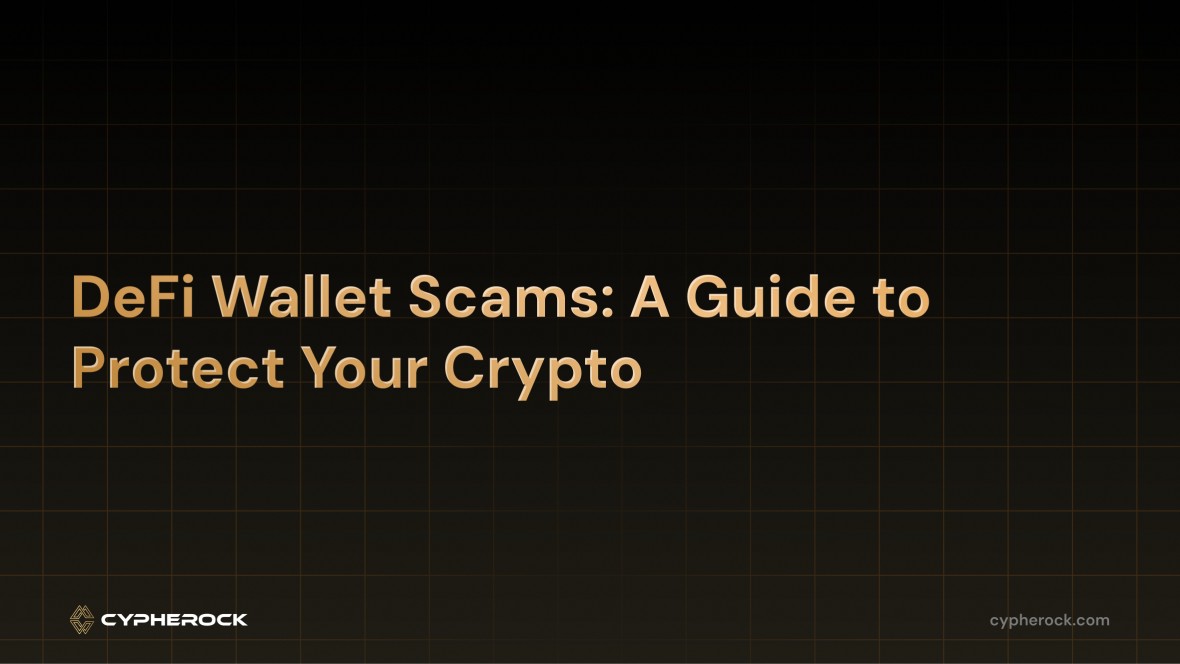

DeFi wallets give you full control of your crypto. That’s true. But with control comes full responsibility. No company is protecting your money. No customer support will fix a mistake. It’s all on you. And that’s exactly why scammers love DeFi.
They know many users are still learning. Some people click on links too fast. Others trust projects too easily. Scammers take advantage of that. They create fake apps, fake tokens, and fake promises. If you’re not careful, they can steal your crypto in seconds. The good news? You can stay safe.
This guide is here to help. We’ll walk you through the types of DeFi wallet scams, how to spot them, and what you can do to stay protected. You don’t need to be a tech expert. You just need to know what to watch out for.
By the end, you’ll know the red flags, the tricks scammers use, and the best ways to protect your wallet.
A DeFi wallet scam is a trick. It’s designed to get your crypto or your wallet access.
Most scams come from bad people who want your money. They don’t care if you’re new or experienced. If you make one mistake, they can drain your wallet in seconds.
DeFi wallet scams are different from other crypto scams. Many scams happen on exchanges or with fake investments. But in DeFi, you are the bank. That makes you the target.
Scammers often don’t need your password. They just need you to approve the wrong contract, visit the wrong site, or give away your seed phrase.
Once that happens, your money is gone.
DeFi wallet scams can steal small amounts or everything at once. They might trick you into connecting your wallet to a bad dApp. Or they might send you fake tokens that drain your funds when you try to move them.
Why do scammers target DeFi wallets?
Simple. They know most users are in charge of their own funds. No bank. No call center. If you lose access, no one can help you get it back.
That’s why DeFi wallet scams are so dangerous. But don’t worry. You don’t have to be scared. You just have to be smart.
In the next section, we’ll show you the most common types of scams. Once you know what they look like, you’ll be ready to stop them.
DeFi scams come in many forms. Some are quick. Some are slow and sneaky. But all of them have one goal—to get your crypto. Let’s go through each major scam so you know what to avoid.
A rug pull starts with a fake project. Scammers create a token, a website, and maybe even a community. It looks real. It might promise huge returns or say it's “the next big thing.”
You invest. So do others. Then one day, the developers vanish. They take all the money and shut down the project.
Your tokens? Now worth nothing.
How it happens:
Tip: Always check if a project is audited. Avoid tokens without team info or locked liquidity.
Phishing scams pretend to be someone or something you trust. Maybe it’s an email that looks like your wallet provider. Or a fake Twitter account that seems real.
They tell you to “verify” your wallet or “fix an error.” Then they ask for your seed phrase or get you to click a link.
What happens next?
Tip: Never click random links. No real wallet provider will ever ask for your seed phrase.
Smart contracts are what power DeFi apps. But some are coded to be traps. If you approve the wrong contract, it might take more than you think.
Some contracts can drain your wallet right after you hit “approve.”
How it works:
Tip: Always check contract approvals using tools like Etherscan or Revoke.cash.
Scammers copy real accounts. They use fake usernames, but at first glance, it looks legit. Then they offer a giveaway.
“Send 0.1 ETH and get 1 ETH back!”
It’s a trap. You send your crypto. You never hear back.
How they trick you:
Tip: No real project will ask you to send crypto first to get a reward.
These are fake tokens that look like they can make you rich. You can buy them—but you can’t sell them.
It feels like a win when the price rises. But the smart contract blocks you from cashing out.
Why it’s called a honeypot:
Tip: Be careful with unknown tokens. Use tools like Token Sniffer to check for honeypots.
Dusting means someone sends a tiny bit of crypto to your wallet. It’s not free money. It’s bait.
They use this dust to track your transactions and find out who you are. If they think you have a lot of crypto, they may target you next.
What to watch for:
Tip: Don’t interact with unknown tokens. Just hide or ignore them.
Scammers say you’ve won free tokens or can mint a rare NFT. All you have to do is connect your wallet.
Once you do, their smart contract drains your funds.
What happens:
Tip: Never connect your wallet to unknown sites. Always verify official links.
Each of these scams is sneaky in its own way. But once you recognize the patterns, you’ll be harder to fool.
Scammers leave clues. If you know what to look for, you can spot trouble early.
If a project says “risk-free 10x profits,” it’s lying. No real investment is guaranteed. High returns come with high risk.
Scam projects often hide who’s behind them. No names, no LinkedIn, no background? That’s a big warning sign.
Legit DeFi projects get their code audited. If there’s no audit—or the audit looks fake—walk away.
Scam sites often have odd domain names, spelling errors, and strange grammar. Real teams take the time to get it right.
If a project pushes you to “act now or miss out,” slow down. Scammers love urgency because it makes people careless.
Now that you know the signs, here’s how to catch a scam while it’s happening.
Before using any new app, see what it’s asking to access. Some dApps ask for permission to move all your tokens.
Use tools like:
Revoke anything that looks too broad.
Is the token or dApp verified on Etherscan? Are others using it? If there’s no info, that’s risky.
Sites like DeFiSafety, RugDoc, and Certik review smart contracts and dApps. If they say something’s shady, believe them.
You don’t need to be a tech genius to stay safe. Just follow a few smart habits.
Hardware wallets like Cypherock keep your keys offline. That means no one can hack them over the internet.
Use hot wallets (like MetaMask) for daily use, and cold wallets for savings.
When you approve a token for a dApp, don’t give it full control forever. Check approvals often and revoke what you don’t use.
Turn on:
These steps stop many basic attacks.
New farms and mystery tokens might look exciting, but they’re risky. Stick to well-known dApps and wallet apps.
If something is brand new and unaudited, wait and watch.
Follow crypto security news. Learn from Reddit, YouTube, and trusted blogs. The more you know, the harder you are to scam.
It happens. Don’t panic. Here’s what to do if you’ve been tricked:
Use your wallet app to disconnect from the scam dApp right away.
Use Revoke.cash or Etherscan’s tool to block the dApp from moving tokens again.
Transfer whatever is left to a fresh wallet that hasn’t been exposed.
Let the wallet provider and platform know. Even if they can’t recover funds, they can warn others.
In some countries, you can file a complaint with cybercrime units. You might also talk to a blockchain security firm.
DeFi is amazing. It gives you control, freedom, and access to new financial tools. But it also makes you the gatekeeper. That’s why learning to spot scams is so important.
No matter how good the deal looks, take a second to verify. Don’t click every link. Don’t trust random messages. And never, ever share your seed phrase. The best protection is knowledge. You’ve got it now—use it well.
And if you’re serious about security, consider using a cold wallet like Cypherock. It spreads your private key across multiple devices, removing single points of failure. That means even if one piece is lost or stolen, your crypto stays safe.
Remember: in DeFi, you hold the keys. Protect them like your future depends on it—because it does.

Are you ready to start your journey into decentralized finance?
Discover how Cypherock can help secure your future in DeFi - Explore now!
Connect with us:
Twitter: @CypherockWallet
Telegram: Join the Community
